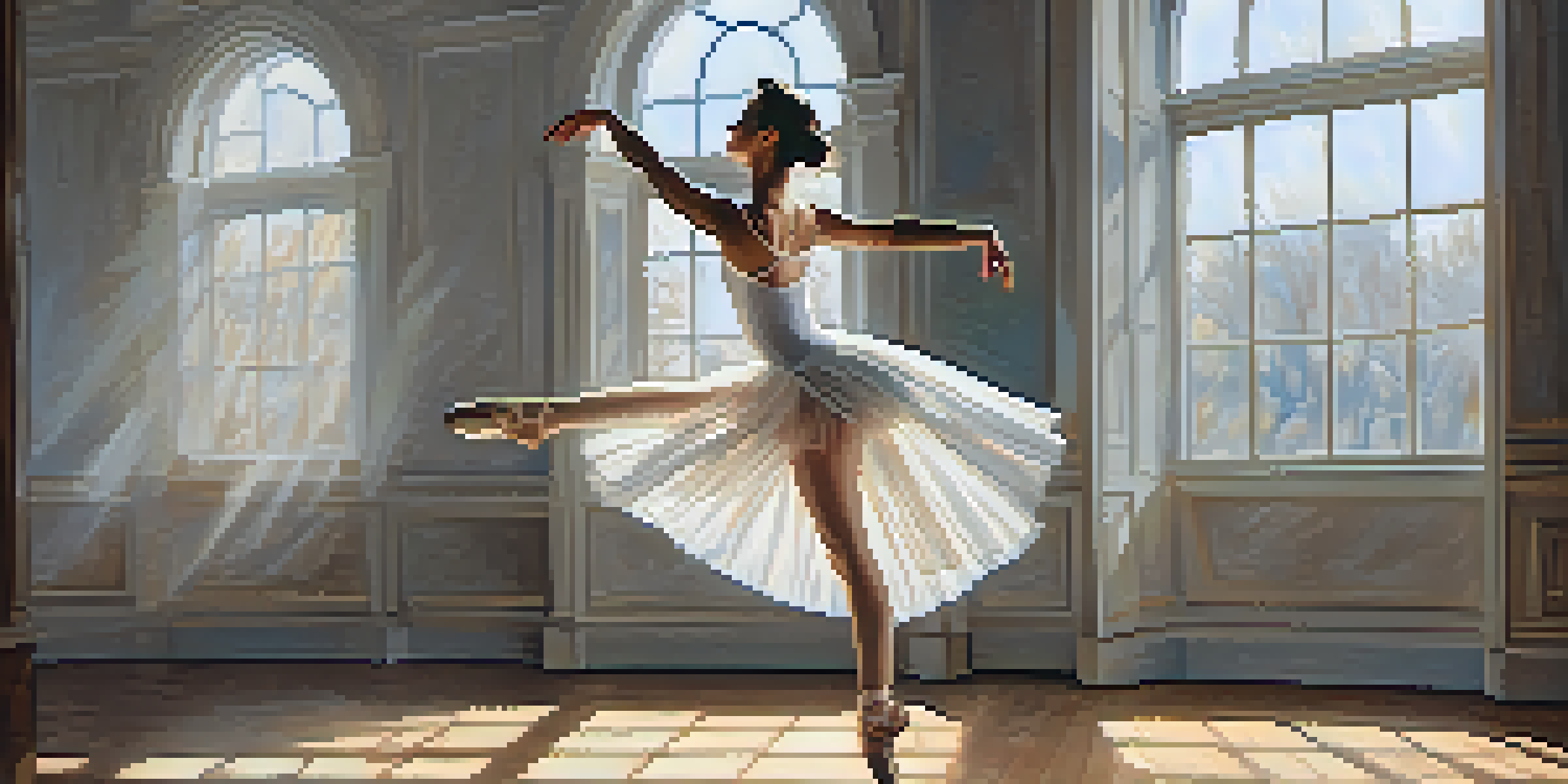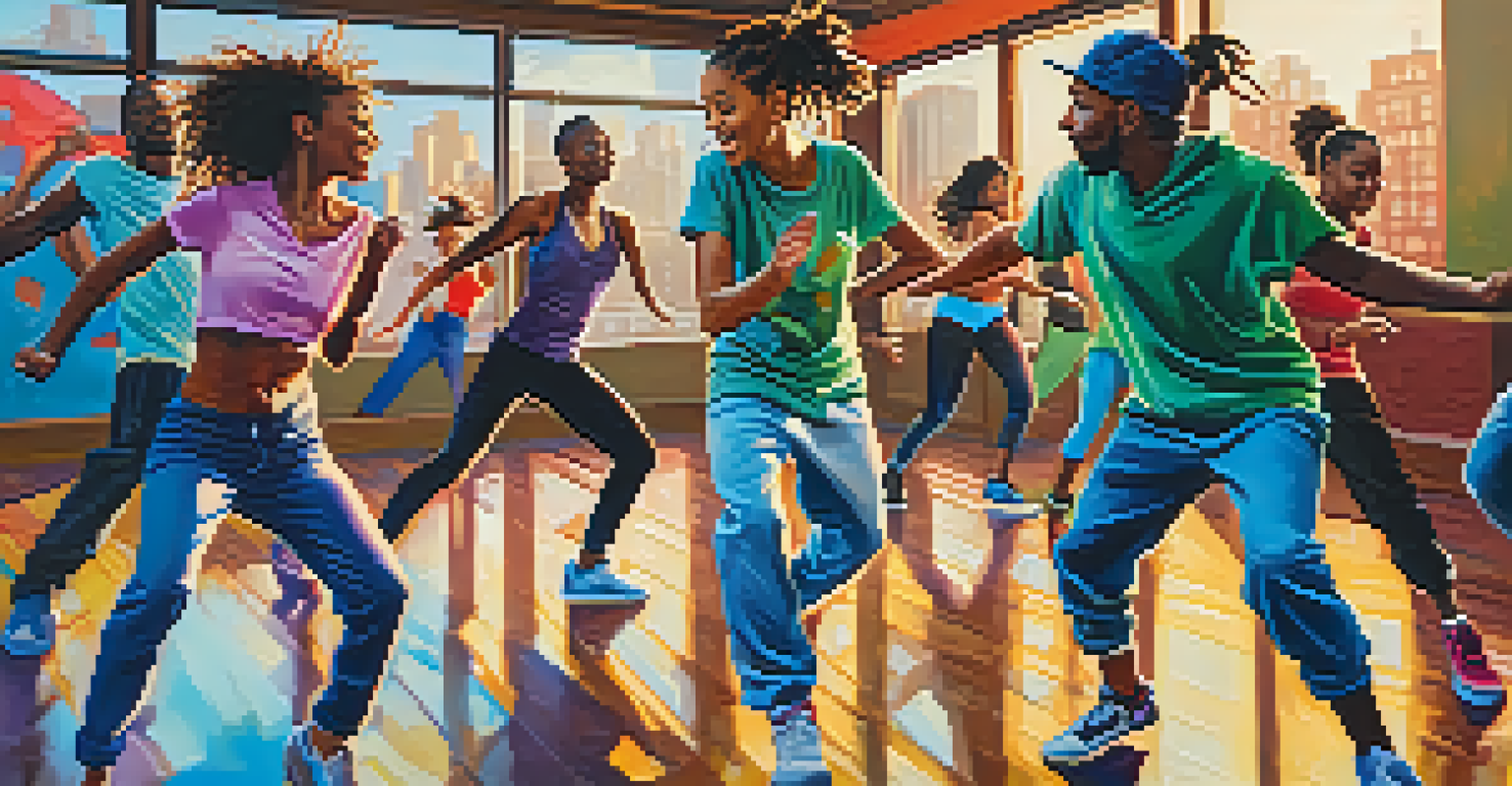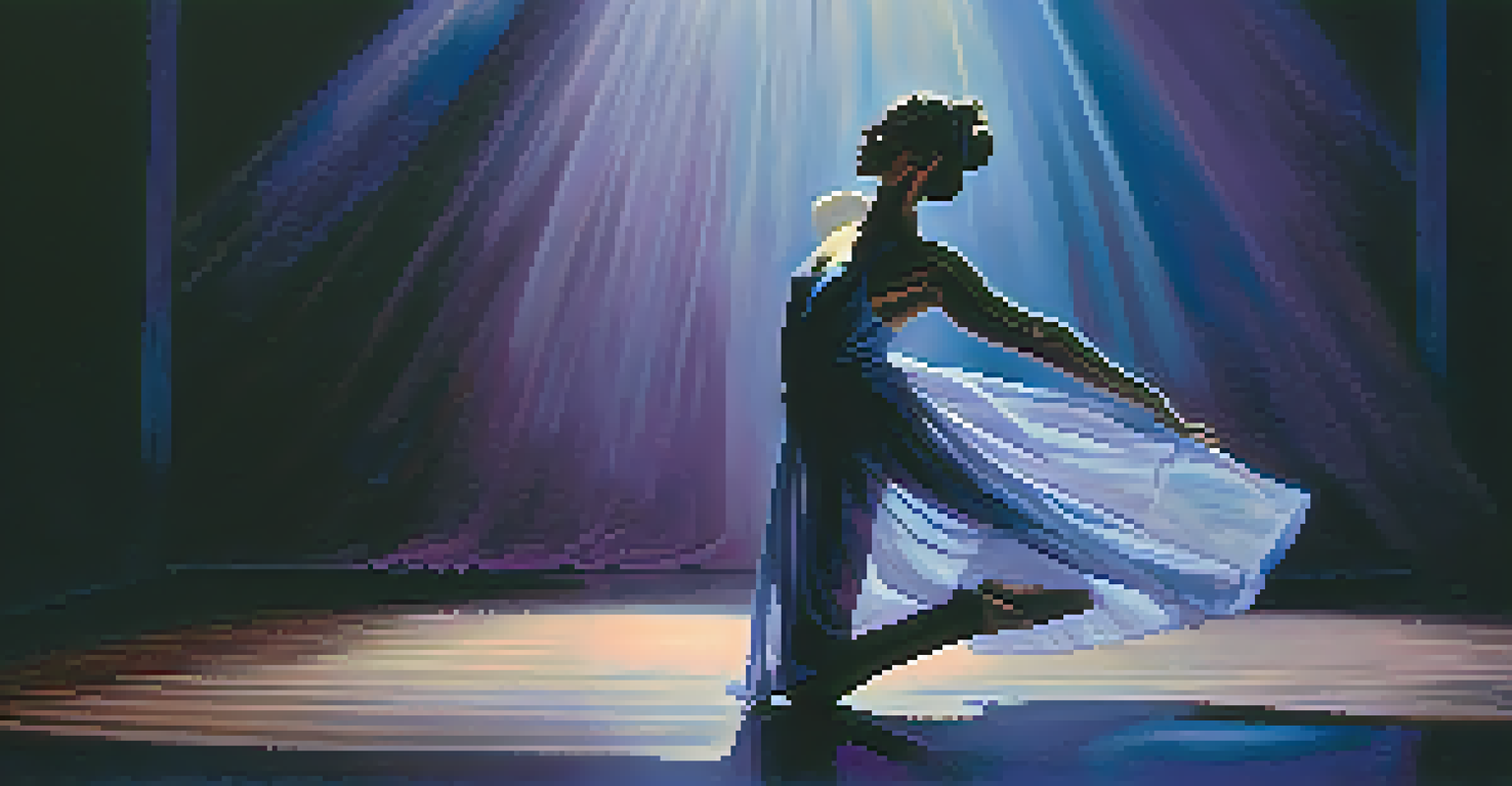Dance as a Form of Expression: Channeling Emotions Through Movement

Understanding Dance as Emotional Expression
Dance is often described as a universal language, transcending barriers and allowing individuals to express emotions in profound ways. When we move, we tap into feelings that words might fail to capture, whether it's joy, sadness, or even anger. Each step, each sway, and each leap can resonate with our innermost thoughts and experiences, creating a dialogue between body and spirit.
Dance is the hidden language of the soul.
This connection between movement and emotion is not just limited to the dancer; it also engages the audience. When we watch a dance performance, we often find ourselves feeling the emotions being conveyed, as if we are part of the story. This shared experience can foster empathy and understanding, bridging gaps between different cultures and backgrounds.
For many, dance is a safe space to explore and communicate emotions that might be difficult to articulate. From ballet to hip-hop, each style offers unique ways to channel feelings, allowing individuals to find a form that resonates with their personal journey.
The Therapeutic Benefits of Dance
Dance is not only an art form but also a powerful therapeutic tool. Many therapists incorporate dance movement therapy (DMT) into their practice, recognizing its ability to help individuals process emotions and trauma. Through movement, clients can release pent-up feelings and gain new insights about themselves.

Engaging in dance can lead to improved mental health, reducing symptoms of anxiety and depression. The physical activity involved releases endorphins, which are chemicals in the brain that act as natural painkillers and mood elevators. As individuals express themselves through dance, they often find a sense of relief and liberation.
Dance as a Universal Language
Dance transcends barriers, allowing individuals to express complex emotions that words cannot capture.
Moreover, dance fosters a sense of community and belonging. Group classes and performances create opportunities for social interaction, helping individuals feel more connected and supported in their emotional journeys.
Cultural Significance of Dance in Emotional Expression
Throughout history, dance has played a vital role in various cultures as a means of storytelling and emotional expression. From traditional folk dances to contemporary performances, different cultures have used movement to relay their unique experiences, struggles, and celebrations. This rich tapestry of dance forms highlights the diverse ways emotions can be expressed across the globe.
To watch us dance is to hear our hearts speak.
For instance, the expressive movements of Indian classical dance often tell stories of love and devotion, while African dances may communicate communal joy or sorrow. Each cultural dance form is infused with the emotions and values of its people, making it a powerful tool for emotional expression.
As global influences blend, we see new styles emerging that incorporate elements from multiple cultures, allowing for even more diverse expressions of emotion. This fusion not only enriches the dance community but also emphasizes the importance of sharing and understanding emotional experiences across different backgrounds.
Personal Stories: Dance as a Reflection of Emotion
Many dancers have personal stories that illustrate how dance has helped them channel their emotions. For instance, a dancer may share how they used movement to cope with the loss of a loved one, finding solace and healing through the art form. Such narratives highlight the transformative power of dance in navigating complex feelings.
Another example could be a dancer who uses upbeat choreography to express joy and celebration in their life, showcasing how dance can amplify positive emotions. These personal connections to movement emphasize that dance is not just a performance; it's a deeply personal experience that reflects individual journeys.
Therapeutic Benefits of Dance
Engaging in dance can improve mental health by helping individuals process emotions and fostering a sense of community.
By sharing these stories, we invite others to see dance as a viable outlet for their own emotions, encouraging them to explore their feelings through movement. This connection can be incredibly empowering, reminding us that we are not alone in our experiences.
Dance Styles and Their Emotional Impact
Different dance styles evoke various emotions, each with its unique characteristics and techniques. For instance, ballet often conveys elegance and grace, often reflecting themes of love and beauty, while contemporary dance may explore more raw and unpredictable emotions. Understanding these nuances can help dancers and audiences alike appreciate the emotional depth within each style.
Hip-hop, with its energetic beats and dynamic movements, often expresses themes of resilience and empowerment, resonating with those who face challenges. Conversely, styles like tango can evoke feelings of passion and intensity, showcasing the duality of emotions in relationships. Each dance form serves as a canvas where emotions can be vividly painted through movement.
As dancers experiment with various styles, they may find specific forms that resonate with their personal emotions, helping them articulate feelings they may struggle to express otherwise. This exploration is crucial in the journey of using dance as a form of emotional expression.
The Role of Music in Dance and Emotion
Music and dance share a symbiotic relationship that significantly enhances emotional expression. The rhythm, melody, and lyrics of a song can evoke specific feelings and inspire movement. For instance, a slow, melodic piece may prompt gentle, flowing movements, while an upbeat track might encourage energetic and lively dancing.
When dancers connect with the music, they often find themselves expressing emotions more profoundly. The combination of sound and movement creates a powerful experience, allowing individuals to delve deeper into their feelings. This connection can lead to cathartic releases, where dancers feel a sense of relief and clarity.
Cultural Significance of Dance
Different cultures use dance to tell stories and express emotions, highlighting the diverse ways feelings can be communicated.
Moreover, the cultural context of music can further enrich the emotional experience. Traditional songs associated with specific dances often carry historical and emotional significance, deepening the connection between the music, movement, and the emotions being expressed.
Encouraging Emotional Expression Through Dance
Promoting dance as a means of emotional expression starts with creating inclusive spaces where everyone feels welcome to move. Community dance classes, workshops, and performances can serve as platforms for individuals to explore their feelings through movement without judgment. These environments foster a sense of belonging and encourage personal expression.
Additionally, educators and dance instructors can emphasize the emotional aspects of dance in their teaching. By encouraging students to tap into their feelings and share their interpretations, they can help cultivate a deeper understanding of how movement can communicate emotion. This approach empowers dancers to find their unique voices within the art form.

Ultimately, encouraging emotional expression through dance can lead to more authentic performances and richer experiences for both dancers and audiences. By opening the door to vulnerability, dance can become a powerful tool for connection and healing.